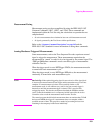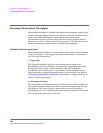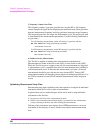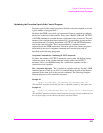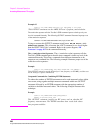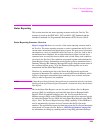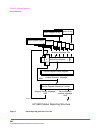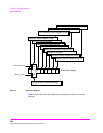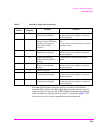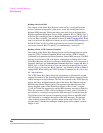
237
Chapter 5, Advanced Operations
Increasing Measurement Throughput
Optimizing the Execution Speed of the Control Program
Execution speed of the control program is defined as the time required to execute
a given number of program lines. .
Each time the GPIB is accessed, a given amount of time is required to configure
the devices on the bus for data transfer. Every time a BASIC or IBASIC OUTPUT
or ENTER statement is executed this bus configuration time is incurred. The total
amount of bus configuration time expended for a given number of program lines
can be minimized by reducing the number of OUTPUT and ENTER statements
used in the control program. This is accomplished by combining several
commands into one GPIB transaction. Execution speed of the control program is
influenced by the use of compound commands and screen display time as
described in the following paragraphs
Compound Commands for Combining OUTPUT Statements
To reduce the number of OUTPUT statements used to make the desired settings
within one screen, string together multiple settings within one OUTPUT
statement. This is accomplished using the ; (semicolon) separator and the ;:
(semicolon colon) separator.
The ; (semicolon) Separator. The ; (semicolon) separator tells the Test Set’s GPIB
command parser to back up one level of command hierarchy and accept the next
command at the same level as the previous command. The following examples
illustrate proper use of the semicolon separator:
Example #1
OUTPUT 714;"RFG:AMPL -66 DBM;FREQ 500 MHZ;AMPL:STAT ON"
!This OUTPUT statement sets the RF generator’s amplitude, frequency, and output state.
Example #2
OUTPUT 714;"RFG:MOD:EXT:DEST ’FM (/Vpk)’:FM 12.5 KHZ;FM:STAT
ON"
!This OUTPUT statement configures the RF generator to accept external modulation from
the rear-panel input, sets the amount of deviation, and turns FM on.





